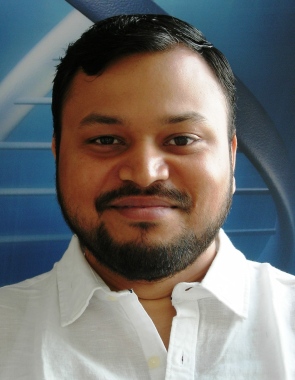Participants: LTU Division of Space technology and OHB Sweden.
This project ended on February 4, 2021, when Sumeet Satpute graduated with a doctorate, after five years of collaboration. Below you can find the abstract of his thesis “Guidance and Control for Multiple Spacecraft Formation”. which can be downloaded here. Sumeet will continue to work at LTU as a postdoc within the Department of Computer Science, Electrical and Space Engineering.
Abstract
Multiple spacecraft formation forms a distributed space system where multiple spacecraft cooperatively exhibit the functionality of a single monolithic spacecraft or work in a cooperative way towards the completion of a common goal. This possibility of distributing the workload between different spacecraft provides the ability to work in parallel, enable economic and simple solutions in terms of spacecraft design, while is redundant towards partial or complete failure of a spacecraft. Some of the challenges, associated to the guidance and control aspects of the spacecraft formation, are to maintain a safe separation distance between each spacecraft in the formation to avoid any collision, the distribution of workload between the spacecraft group, and designing fuel efficient trajectories for each spacecraft. This thesis focuses on studying these challenges through two respective mission scenarios, a) the co-location of geostationary satellites, and b) the cooperative visual coverage of an asteroid.
The first part of the thesis covers the development of guidance and control strategies to co-locate multiple geostationary satellites safely with a single operational slot. This part of the research is motivated by the growing demand to access the limited Earth resource of geostationary region; the growing use of low-thrust electric propulsion systems for geostationary satellite platforms; and the use of the same propulsion system for station keeping and momentum management of the reaction wheels to maintain a nadir pointing attitude for the satellites. Thus, to address the concurrent maneuver planning problem, a convex-optimization-based algorithm is proposed that incorporates a dual-rate prediction model to address the time scaling difference between the coupled slow orbital and fast attitude dynamics. The use of a combined prediction model in the optimization problem facilitates to include state constraints accounting for the desired orbital and momentum unloading requirements. This algorithm is then extended to the co-location problem, where a leader-follower architecture is adopted to define relative orbital elements of the satellites. The separation distance between the satellites in maintained by defining convex bounds on the relative orbital elements of the follower satellites. The algorithm is then implemented in receding horizon control form to introduce autonomy and to maintain tighter state constraints.
The second part covers the trajectory planning for a spacecraft group for the visual coverage mission of an asteroid. In asteroid missions, it is of a specific interest to determine the surface and material properties of the target asteroid by obtaining high-resolution measurements from multiple sites over the asteroid surface. This task can be accomplished using a group of spacecraft, equipped with optical sensors that are moving in proximity to the asteroid. During this mission, an important problem to solve is the to determine a fuel optimal observing sequence and the associated trajectories for a given set of target sites for each spacecraft. However, the completion of the observation task, for a specific site, is limited to the observation time window, usually referred as the period for which a site is illuminated by the Sun. Two trajectory planning algorithms are proposed, which are tested for a single spacecraft case to compare their performance in terms of finding an optimal solution. The travelling salesman based planning algorithm provided near-optimal results in terms of fuel consumption. This algorithm is then extended to the multiple spacecraft case to determine the near-optimal unique observing tour for each spacecraft.
The efficacy of the proposed algorithms are evaluated, in terms of fuel consumption and constraints enforcement using several numerical simulations that take into account dominant perturbations in the respective environment.
Contact
Sumeet Gajanan Satpute
Space Technology
[email protected]
Kiruna
